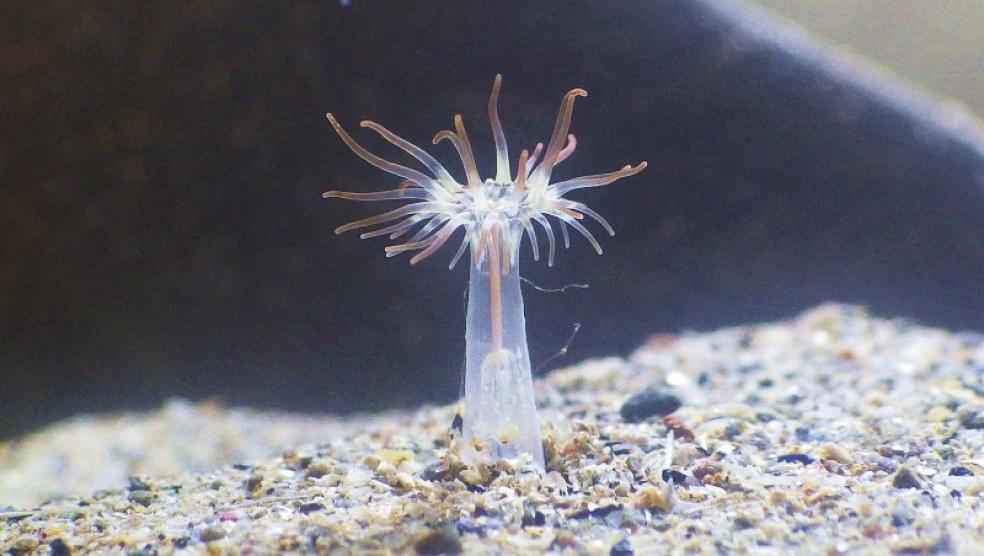
‘Fairy’ found on North Devon coast
A new variety of sea anemone has been found off the coast of north Devon. Just 6mm tall, the tiny animal was spotted by retired teacher Robert Durrant in Hele Bay, near Ilfracombe.
But it took an international exchange of emails and photos before the anemone was identified as a new variety. As it lacks a common name, Robert has proposed calling the small, pretty creature the ‘fairy anemone’.
As a volunteer marine recorder for Coastwise North Devon, Robert wasn’t particularly looking to find a new species. He takes up the story: “It was found by accident at Hele Bay really – I took a photo and posted it on Facebook and experts hadn’t a clue. So I decided to take a specimen for my aquarium at home to feed the anemone to see how it would develop – and get some more photos to try to identify it.”
There are more than forty recognised species of sea anemone found on our coasts, with the dark red beadlet anemone the most commonly seen. Although their appearance gives the impression of a flowering plant, the tentacles on these animals make them very effective predators.
Once Robert had started to feed the anemone in his aquarium, it grew a little. He also noticed it reproducing asexually by breaking off small fragments of its body then moving away from them. In time, these smaller pieces will develop into individual anemones.
The breakthrough in identification came after Robert tried a different way of photographing the animal. Robert said: “I took a backlit photo which showed very clearly the transparency of the anemone as well as the tiny tubercules growing on it.” After more online correspondence a French expert, Wilfried Bay-Nouailhat, identified it as a different variety of an anemone known to science as Aiptasiogeton pellucidus.
Robert explains: “This anemone had been found in Portland Harbour in 1976, then further along the Dorset coast over the next two years – after that it disappeared off the radar.”
But the differences between the anemones found in Dorset in the 70s and that of Robert’s find in 2014 are enough that experts agree they are different varieties of one species. As the scientific name for the Hele Bay discovery, Aiptasiogeton pellucidus var comatus, is a bit of a mouthful, Devon Wildlife Trust asked Robert for a suggested common name. Robert’s preference? “I’d like to call it the fairy anemone, as it’s so small, delicate and elusive.”
Since this record, further anemones have been found at Newlyn in Cornwall which are individuals of the ‘Hele Bay’ variety, rather than the previously familiar ‘Portland Harbour’ variety.
Devon Wildlife Trust’s Dan Smith commented: “It’s amazing that new animal discoveries can still be made right on our shores. The north Devon coast is particularly rich in marine habitats and species, which is why local people nominated the area from Bideford to Foreland Point as a Marine Conservation Zone. Government missed this site off the list in the first designations of MCZs in 2013, but we have a chance to secure protection for this stunning section of coast in the new year.
“Bideford to Foreland Point is one of three recommended MCZs for north Devon which the Government is considering for designation in 2015 – and public support could help secure protection for these marine sites.”
The Government is expected to begin a public consultation on new Marine Conservation Zones in January. People can discover how to get involved on The Wildlife Trusts website: www.wildlifetrusts.org/mcz
So the fairy on top of the Christmas tree is not the only one to have caught the eye this winter. Another ‘fairy’ off the north Devon coast shows how even the experts can still be dazzled by the wildlife beneath the waves.
Photo: Anemone in aquarium by Robert C Durrant.












